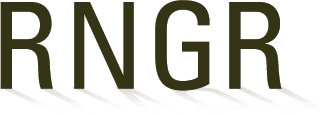
Echinacea (angustifolia)
|
Richard L. Wynia USDA NRCS - Manhattan Plant Materials Center 3800 S. 20th Street Manhattan, Kansas 66502-9535 (785) 539-8761 (785) 539-6928 (fax) rich.wynia@ks.nrcs.usda.gov http://plant-materials.nrcs.usda.gov/kspmc |
|
| Family Scientific Name: | Asteraceae | ||
|---|---|---|---|
| Family Common Name: | Aster | ||
| Scientific Name: | Echinacea angustifolia | ||
| Common Name: | Black Samson | ||
| General Distribution: | Open rocky prairies and plains on the Great Plains, less frequent on the far-western edge; rarely existing east to central New Mexico and northwest Iowa. | ||
| Propagation Goal: | seeds | ||
| Propagation Method: | seed | ||
| ProductType: | Propagules (seeds, cuttings, poles, etc.) | ||
| Time To Grow: | 0 | ||
| Propagule Processing: |
EASE OF COLLECTION: Mature heads may be clipped from plants. METHOD OF CLEANING: Run the heads through a hammermill using a 3/8 screen at 400 rpm; followed by running the seed through the Clipper M2B several times using screen sized: upper=11, lower=1/22, upper air adjustment either closed or 1/10-1/4 open, lower air closed. Then run the seed through the Clipper desk top cleaner several times until clean. TYPE OF MATERIAL COLLECTED FOR PROPAGATION: Seed. PROPAGATION METHOD: Sow 1/4 inch deep in clean, form, seed bed, late fall, in the field or sow seed in flats following cold-moist stratification. NUMBER OF SEEDS PER POUND: 97,000 or 150,000 clean caryopsis. PERCENT GERMINATION: 24% + 40% dormant = 64% (4 year average); Best results obtained at 19-26§C. |
||
| Pre-Planting Treatments: | PRETREATMENT USED: 9 to 15 weeks cold-moist stratification for best results. | ||
| Growing Area Preparation/ Annual Practices for Perennial Crops: |
METHOD OF GROWING: In field in rows. Seedlings in flats should be transplanted after first growing season. | ||
| Harvesting, Storage and Shipping: |
SEED MATURITY DATE: July 22 - August 21. UNUSUAL OR UNIQUE HARVESTING OR DIGGING REQUIREMENTS: Field grown plants may be lifted in early spring for transplanting. STORAGE REQUIREMENTS: Low humidity and temperature extends viability. ESTIMATED PROPAGULE STORAGE POTENTIAL: At least 2 years under controlled environment (see storage requirements). |
||
| Other Comments: | REESTABLISHMENT TECHNIQUES: It is critical that transplants be set at original soil depth. Watering transplants in is desirable. | ||
| References: |
Art, Henry W. 1986. A Garden of Wildflowers. Storey Communications, Inc., Pownal, VT 05261. P. 120-121. Great Plains Flora Assoc., T. M. Barkley, Ed. 1986. Flora of the Great Plains. University Press of Kansas, Lawrence, KS. P. 921-922. Hesse, MargaretC. 1973. Germination of Seven Species of Wild Flowers as Affected By Different Pregermination Conditions. MS Thesis, U. of Nebraska. P. 29-34. Sullivan, Gene A. and Richard H. Daley 1981 Directory to Resources of Wildflower Propagation, National Council of State Garden Cluds, Inc., Missouri Botanical Garden. P. 98 and 225. |
||
Citation:
Wynia, Richard. 2001. Propagation protocol for production of Propagules (seeds, cuttings, poles, etc.) Echinacea angustifolia seeds USDA NRCS - Manhattan Plant Materials Center Manhattan, Kansas. In: Native Plant Network. URL: https://NativePlantNetwork.org (accessed 2025/09/18). US Department of Agriculture, Forest Service, National Center for Reforestation, Nurseries, and Genetic Resources.



